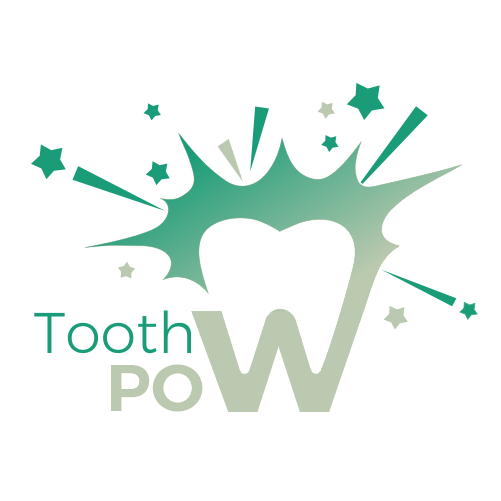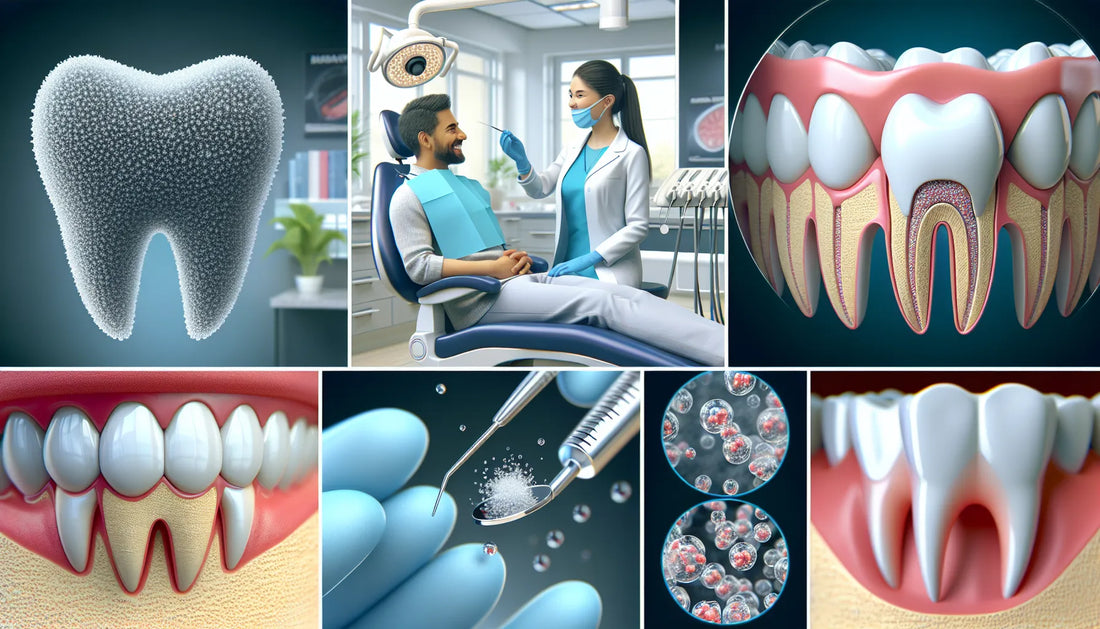Introduction
Nano-hydroxyapatite (nano-HA) is a biomaterial that has garnered significant attention in the field of dentistry due to its excellent biocompatibility and structural similarity to the mineral component of bones and teeth. This introductory section aims to discuss the relevance of nano-HA in preventive, restorative, and regenerative dentistry, exploring its foundational role and potential benefits over traditional materials.
Background
Tooth enamel, the hardest and most mineralized tissue in the human body, consists predominantly of hydroxyapatite in a nano-crystalline form. This composition not only imparts strength and durability to teeth but also provides an aesthetic bright white appearance due to its light-reflective properties. Historically, hydroxyapatite has been extensively studied and utilized due to its compatibility with biological tissues, playing a critical role in both bone and dental applications.
The Role of Nano-Hydroxyapatite in Dentistry
Nano-HA's significance in dentistry extends beyond mere structure; it acts as a critical agent in remineralization processes. As a primary component of enamel and bone, it aids in the repair and prevention of tooth decay by replenishing mineral loss from tooth surfaces. Additionally, nano-HA particles are small enough to penetrate microscopic pores in tooth enamel, filling them and preventing decay and sensitivity.
Innovations and Applications
The advancement of nanotechnology has paved the way for enhanced applications of nano-HA in dentistry. From its integration into toothpastes that aim to repair enamel at a micro-level to its use in restorative compounds that improve the mechanical properties of dental cements, nano-HA is at the forefront of dental material innovation. Its ability to chemically bond with bone and tooth material without causing inflammation or toxicity makes it an ideal substance for various dental applications, including fillings and coatings for dental implants.

Applications in Preventive Dentistry
Nano-hydroxyapatite (nano-HA) is revolutionizing preventive dentistry by offering an effective alternative to fluoride-based treatments for the protection and remineralization of enamel. This section delves into the specific preventive applications of nano-HA, highlighting its benefits in combating tooth decay and erosion.
Mechanism of Action in Preventive Dentistry
Nano-HA's efficacy in preventive dentistry lies in its close resemblance to the natural building blocks of tooth enamel. It facilitates the natural process of tooth remineralization by providing essential minerals directly to the tooth surface. When applied via toothpaste or mouth rinses, nano-HA particles adhere to and fill microscopic enamel pores, effectively reversing early signs of demineralization and decay. This process not only restores the tooth's mineral density but also enhances its resistance to future acid attacks.
Clinical Benefits and Comparative Effectiveness
Studies comparing nano-HA to fluoride indicate that nano-HA can be equally or more effective in remineralizing enamel. The particles of nano-HA are able to bind to teeth and release calcium and phosphate ions, which are essential for rebuilding enamel at a molecular level. This is particularly advantageous in individuals who are at higher risk of dental caries or for those who prefer fluoride-free dental products due to allergies or health concerns related to fluoride.
Preventive Products Incorporating Nano-HA
A variety of dental care products now incorporate nano-HA, including toothpastes, mouthwashes, and chewing gums. These products are designed to provide a daily dose of remineralization, supporting oral health maintenance. For example, toothpastes containing nano-HA are particularly effective in sealing micro-lesions and providing a barrier against plaque build-up, which is a significant factor in the development of dental caries.
Case Studies and Research Outcomes
Several case studies highlight the benefits of nano-HA in preventive applications. Research demonstrates that daily use of nano-HA toothpaste not only reduces the incidence of new carious lesions but also halts the progression of early caries. Furthermore, studies comparing nano-HA toothpaste with traditional fluoride toothpaste have shown that nano-HA can achieve similar or superior results in terms of enamel remineralization and overall oral health improvement.
In conclusion, the integration of nano-HA into preventive dentistry offers a promising alternative to fluoride, with the potential to transform oral health practices by providing a safe, effective, and natural method for protecting and restoring tooth enamel. This innovative approach aligns with the growing demand for holistic and non-toxic health care solutions, making it a valuable addition to preventive dental care strategies.

Applications in Restorative Dentistry
Nano-hydroxyapatite (nano-HA) is making significant strides in the field of restorative dentistry due to its excellent biocompatibility and biomimetic properties. This section explores how nano-HA enhances dental materials and techniques used in restoring teeth.
Enhancing Dental Composites and Cements
In restorative dentistry, nano-HA has been a game-changer by improving the properties of dental composites and cements. Its inclusion in glass ionomer cements (GICs), for example, has been shown to significantly increase the mechanical strength and wear resistance of these materials. This is crucial for the longevity and durability of dental restorations. Nano-HA particles act as fillers that integrate seamlessly with the dental cement matrix, enhancing its cohesive strength and making it more resistant to fracture and disintegration over time.
Improving Adhesion and Aesthetic Outcomes
Nano-HA is also valued for its ability to enhance the adhesive properties of restorative materials. By mimicking the natural composition of tooth enamel, nano-HA facilitates a stronger chemical bond between the restorative material and the tooth structure. This not only improves the longevity of the restoration but also supports conservative dentistry practices by allowing for minimal tooth preparation before applying fillings or crowns.
In terms of aesthetics, nano-HA contributes to a more natural appearance of restored teeth. Its reflective properties are similar to natural tooth enamel, which helps in creating restorations that blend invisibly with the surrounding tooth structure. This is particularly important in front teeth restorations, where aesthetic considerations are paramount.
Application in Endodontics
Nano-HA has found applications in endodontics, particularly in the repair of periapical lesions and root canal fillings. Its osteoconductive properties facilitate bone regeneration around the root and within the bone defects. Additionally, nano-HA can be used to coat gutta-percha, a common material used in root canal treatments, to enhance its sealing abilities and to promote healing and regeneration of periapical tissues.
Clinical Trials and Research
Numerous clinical trials have demonstrated the effectiveness of nano-HA in restorative dentistry. For instance, studies have shown that adding nano-HA to dental adhesives significantly reduces microleakage in tooth restorations, which is a major cause of failure in dental fillings. Another research highlighted that nano-HA composites used in fillings show better thermal and chemical stability, which contributes to their longevity and effectiveness.
In summary, nano-hydroxyapatite stands out as a multifunctional material in restorative dentistry, enhancing not just the mechanical and aesthetic aspects of dental materials but also contributing to the biological integration and performance of dental restorations. Its ability to integrate with tooth structure and promote natural healing processes makes it an invaluable component in the advancement of dental treatment methodologies.

Applications in Oral and Maxillofacial Surgery
Nano-hydroxyapatite (nano-HA) is extensively utilized in oral and maxillofacial surgery due to its superior bioactivity and osteoconductive properties. This section discusses the transformative impact of nano-HA in surgical procedures involving bone regeneration and dental implant integration.
Bone Regeneration and Repair
In the context of oral and maxillofacial surgery, nano-HA is crucial for bone regeneration and repair. It is often used in the form of granules or blocks to fill bone defects resulting from traumatic injuries, tumor resections, or congenital anomalies. Nano-HA provides a scaffold that mimics the natural bone matrix, promoting the attachment, proliferation, and differentiation of osteoblasts, which are essential for bone tissue regeneration.
The nano-scale size of HA particles ensures a larger surface area that enhances ionic exchanges and improves the biological activity at the defect site. This accelerates the bone healing process by facilitating rapid bone ingrowth and increasing the mechanical strength of the regenerated bone. Studies have shown that grafts containing nano-HA lead to higher bone density and faster healing compared to traditional materials.
Enhancement of Dental Implants
Nano-HA is also used to enhance the properties of dental implants. Coating titanium implants with nano-HA improves their biocompatibility and osteointegration capabilities. The nano-HA layer on the implant surface enhances bone apposition, leading to a stronger and more stable anchorage of the implant within the jawbone.
This is particularly beneficial in patients with low bone density or those who require immediate load implants. The nano-HA coating accelerates the bonding between the implant and the surrounding bone tissues, reducing the healing time and improving the success rates of dental implants.
Application in Periodontology
In periodontology, nano-HA is used in procedures aimed at regenerating periodontal tissues lost due to periodontal disease. Nano-HA can be mixed with collagen or other matrices to create a conducive environment for the regeneration of both soft and hard periodontal tissues. It promotes the deposition of new bone at the site of bone loss and aids in the recovery of periodontal ligament and cementum, which are critical for tooth stability.
Clinical Outcomes and Studies
Clinical studies have validated the effectiveness of nano-HA in oral surgery. For instance, research indicates that nano-HA composites are effective in filling alveolar bone defects following tooth extraction, significantly enhancing bone regeneration compared to conventional bone graft materials. Another study highlighted the use of nano-HA in sinus lift surgeries, demonstrating improved bone density and volume necessary for successful dental implant placement.
In summary, nano-hydroxyapatite is a versatile and highly effective material in oral and maxillofacial surgery. Its application ranges from bone regeneration to the enhancement of dental implants, making it a valuable asset in the surgical management of various dental and facial conditions. The continuous development and integration of nano-HA into surgical practices are expected to advance the outcomes and success rates of oral surgeries, ultimately benefiting patients with enhanced healing and recovery times.

Applications in Implantology
Nano-hydroxyapatite (nano-HA) plays a pivotal role in the field of implantology, significantly enhancing the success of dental implants through its osteoinductive properties and its ability to promote superior integration between the implant and bone. This section will delve into the specific applications and benefits of nano-HA in implantology, underlining its transformative impact on patient outcomes and implant success.
Enhancing Osteointegration
Osteointegration is critical for the success of dental implants. Nano-HA coatings on titanium implants have been shown to significantly accelerate this process. The nano-scale particles of HA create a more reactive surface that mimics the natural structure of bone, facilitating rapid bone bonding. This not only shortens the healing time but also improves the stability and longevity of the implants.
Clinical studies demonstrate that implants coated with nano-HA achieve higher bone-to-implant contact ratios faster than those without such coatings. This is particularly beneficial for patients with compromised bone quality, where achieving strong osteointegration is challenging.
Improving Bone Density
Nano-HA is instrumental in improving the density of the bone surrounding the implants. By providing a scaffold that encourages bone deposition, nano-HA helps fill in micro-voids and increases the overall density of the jawbone. This is crucial for the long-term success of implants, especially in cases where bone density is initially low or has been eroded due to disease.
Facilitating Immediate Load Implants
The properties of nano-HA are particularly advantageous for immediate load implants, where the dental implant and the crown are placed simultaneously. By enhancing the initial stability and accelerating bone integration, nano-HA coatings allow for quicker functional loading of the implant. This reduces overall treatment time and improves patient satisfaction by allowing faster restoration of aesthetics and function.
Case Studies and Research
Numerous case studies and research trials have underscored the efficacy of nano-HA in implantology. For instance, a study comparing the performance of nano-HA coated implants versus uncoated implants in patients showed significantly improved outcomes in terms of bone integration and implant stability with the nano-HA coated implants. Another research highlighted the role of nano-HA in patients undergoing bone grafts for implants, where it was found to enhance bone quality and volume, facilitating better support for the implants.
Future Prospects
The future of nano-HA in implantology looks promising, with ongoing research exploring even more advanced applications, such as the development of bioactive nano-HA composites that can actively stimulate bone regeneration and fight infections around implant sites. The integration of nano-HA with other biomaterials to create composite grafting materials is also an area of significant potential, which could redefine the standards of care in implantology.
In conclusion, nano-hydroxyapatite is a cornerstone material in implantology, offering unmatched benefits in terms of enhancing osteointegration, improving bone density, and facilitating the success of immediate load implants. Its continued development and application are set to further advance the field of dental implantology, promising better outcomes for patients and streamlined procedures for healthcare providers.

Analysis of the Scientific Literature in Oral Surgery
Nano-Hydroxyapatite in Oral Surgical Applications
The effectiveness of nano-hydroxyapatite (nano-HA) extends into oral surgery, where its properties are highly valued for enhancing dental implants and reconstructive procedures. The integration of nano-HA with dental materials helps in improving the osteoconductivity of implants, which is crucial for successful osseointegration. This section explores various studies that highlight the application of nano-HA in oral surgery, particularly focusing on its role in dental implantology and periodontal regeneration.
Enhancing Dental Implant Integration
A pivotal study by Masahiro et al. (2012) delved into the use of nano-polymorphic crystalline hydroxyapatite applied to microrough titanium surfaces. The method involved a combination of flame spray and calcination at a low temperature to coat dental implants. The study aimed to evaluate whether this innovative approach could enhance the bone-implant integration, which is critical for the stability and longevity of dental implants.
The experimental setup involved sandblasted microrough titanium implants compared against titanium implants coated with nano-HA. The results demonstrated that the nano-HA coated implants showed a significantly higher percentage of bone-implant contact compared to their uncoated counterparts. The increased surface area provided by the nano-crystalline structure of the HA significantly enhanced osteoconductivity, which facilitated quicker and more effective integration of the implant with the surrounding bone tissue.
Applications in Periodontal Regeneration
Nano-HA's potential in periodontal regeneration has also been widely researched. Singh et al. (2012) conducted a clinical trial comparing the effectiveness of nano-crystalline hydroxyapatite (NCHA) bone graft combined with collagen membranes versus traditional open flap debridement (OFD) in treating intrabony periodontal defects. The study assessed clinical outcomes such as probing pocket depth (PPD) reduction, clinical attachment level (CAL) gain, and bone fill percentage.
The results were promising, showing that sites treated with NCHA bone grafts and collagen membranes exhibited significantly better outcomes in terms of PPD reduction, CAL gain, and bone fill compared to sites treated with OFD alone. These findings underscore nano-HA's role in enhancing periodontal regeneration, offering a superior alternative to conventional treatments.
Innovative Grafting Techniques
In another innovative application, Qu et al. (2010) explored the use of a bioactive and osteoconductive composite formed by nano-hydroxyapatite and polyamide 66 (nHA/PA66) for creating new asymmetric porous membranes for guided bone regeneration (GBR). These membranes were designed to have microporous layers on one side to prevent fibrous tissue ingrowth while allowing nutrient permeation, and macroporous layers on the other side to support bone growth.
This dual-layer approach aimed to optimize the regenerative potential by balancing barrier functionality with nutrient accessibility. The in vitro and in vivo studies affirmed that the nHA/PA66 membrane exhibited excellent biocompatibility and significantly enhanced guided tissue regeneration, making it a viable option for complex reconstructive dental procedures.
Conclusion of Oral Surgery Applications
The integration of nano-hydroxyapatite into oral surgical practices represents a significant advancement in dental material science. Its application ranges from improving the mechanical properties of dental implants to innovating new grafting materials that promote bone and periodontal regeneration. The ongoing research and clinical trials continue to highlight nano-HA's potential as a transformative material in oral surgery, promising better outcomes for patients undergoing various dental reconstructive procedures.

Final Remarks on Nano-Hydroxyapatite in Dentistry
Revolutionary Impact and Future Directions
Nano-hydroxyapatite (nano-HA) has proven to be a revolutionary material in dentistry, offering significant benefits over traditional materials used for preventive, restorative, and regenerative purposes. Its properties align well with the biomimetic approach in dentistry, which aims to mimic natural biologic processes and materials. Nano-HA's exceptional remineralization capacity, superior to that of fluoride, makes it an invaluable component in the fight against enamel demineralization, dental caries, and erosion.
Preventive and Restorative Applications
In preventive dentistry, nano-HA has been shown to provide effective remineralization of initial enamel lesions, offering a higher degree of protection compared to conventional fluoride treatments. Its ability to release free calcium ions plays a crucial role in this process, enhancing the tooth's natural defense against decay and erosion. For restorative dentistry, nano-HA has been used to improve the properties of materials like glass ionomer cements, enhancing their mechanical properties and adhesion to dental tissues.
Innovative Developments in Dental Materials
Research continues to explore new formulations and composites that incorporate nano-HA, aiming to create materials with enhanced capabilities. Examples include nano-HA combined with zinc carbonate for dual-action remineralization and antibacterial properties, and nano-HA with polyamide 66 for creating improved periodontal membranes. These developments hold the promise of creating more effective and durable dental materials that could further revolutionize dental care practices.
Expanding Applications in Oral Surgery
Nano-HA's use in oral surgery, particularly in dental implantology and periodontal regeneration, highlights its potential beyond typical restorative applications. Its osteoinductive properties improve the integration of implants with bone, promoting faster healing and stronger bonds. Additionally, nano-HA composites are being developed for use as grafting materials in periodontal therapy, showing better outcomes in bone regeneration and defect repair.
Conclusion
As the dental industry continues to evolve, nano-hydroxyapatite stands out as a material that not only mimics the natural properties of dental tissues but also enhances them. Its wide range of applications—from restorative compounds to bone grafting materials—underscores its versatility and potential to improve oral health outcomes. Looking forward, the ongoing research and development in nano-HA-based materials are expected to yield even more innovative solutions for both common and complex dental issues.
Looking Ahead
The future of nano-HA in dentistry looks promising, with potential expansions into more personalized dental care products and techniques that cater to individual patient needs. As research progresses, we can anticipate the introduction of more nano-HA-incorporated products that will further improve the efficacy and comfort of dental treatments, ensuring better patient outcomes and advancing the field of dental medicine.

